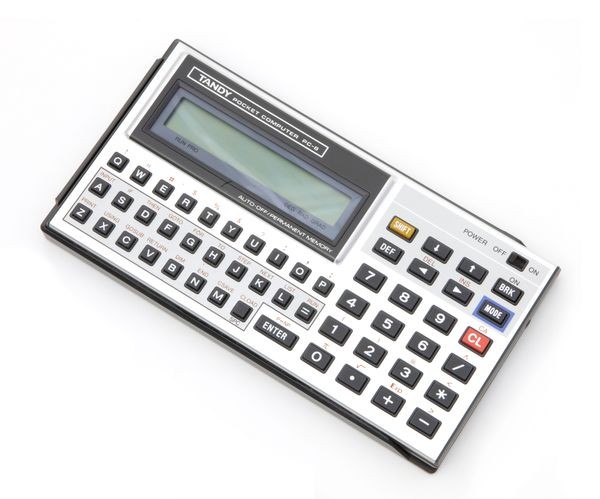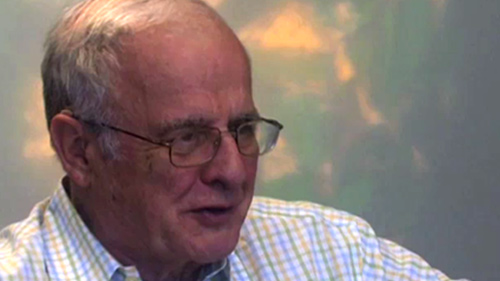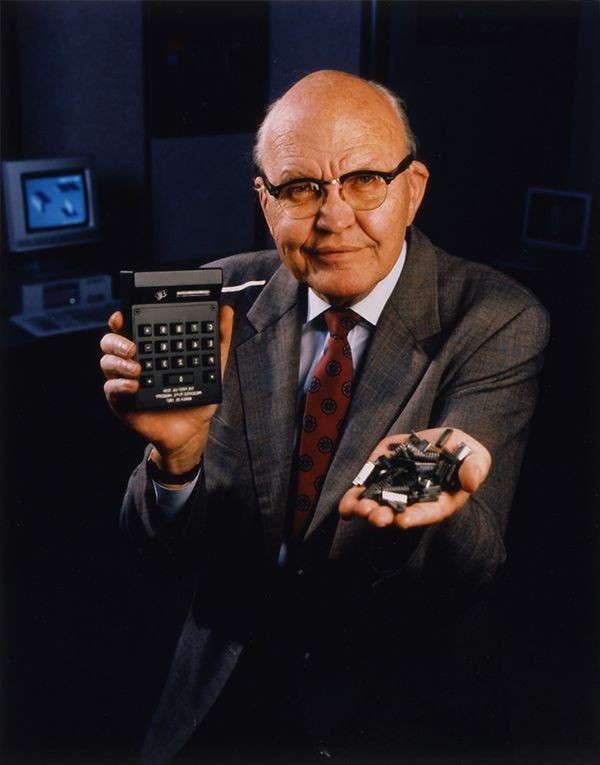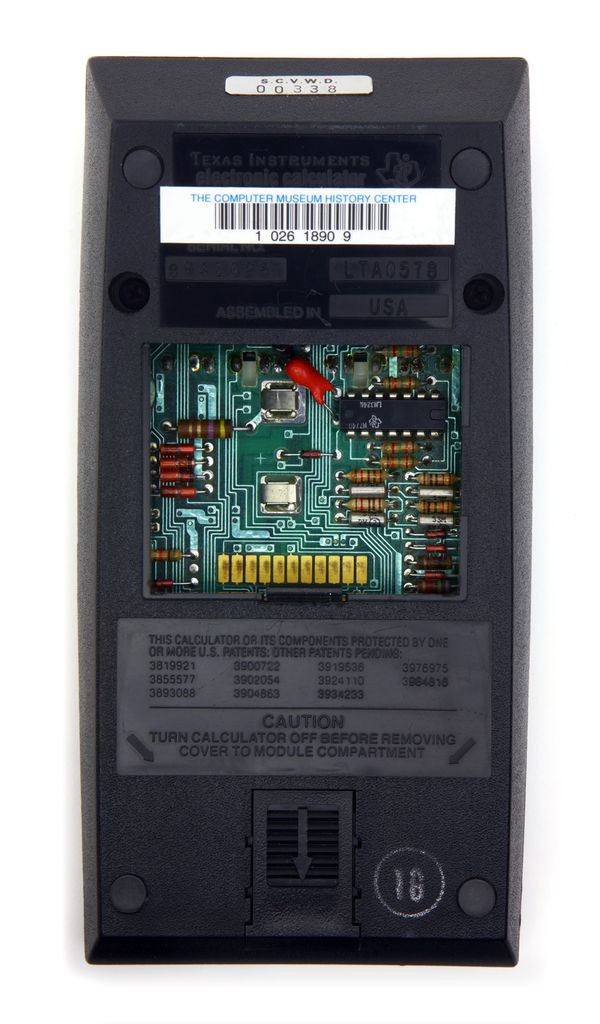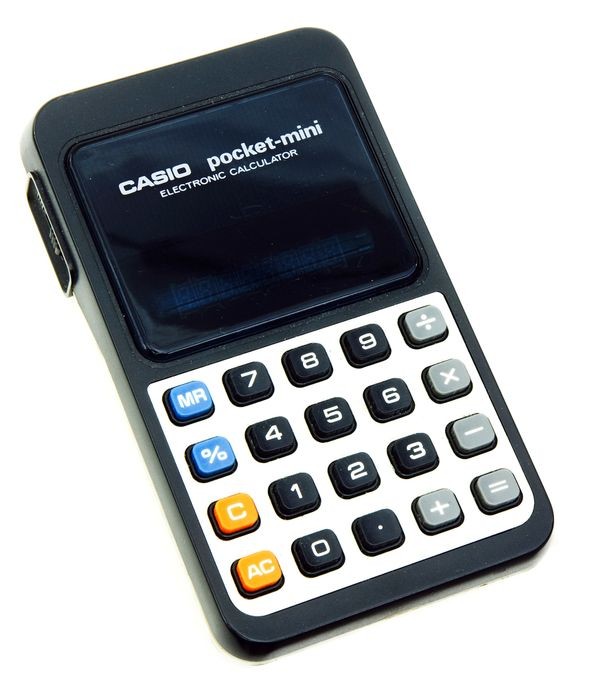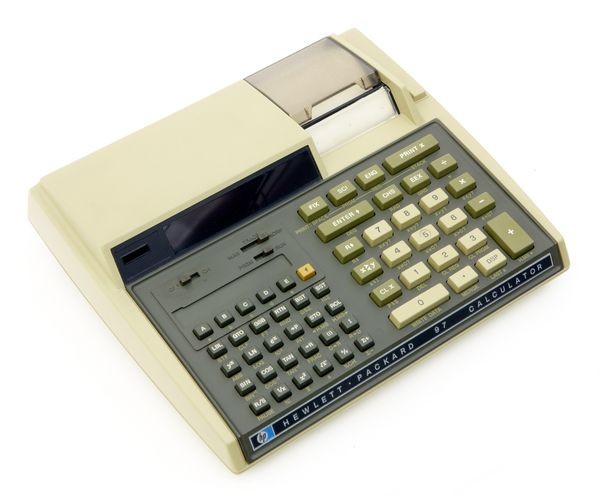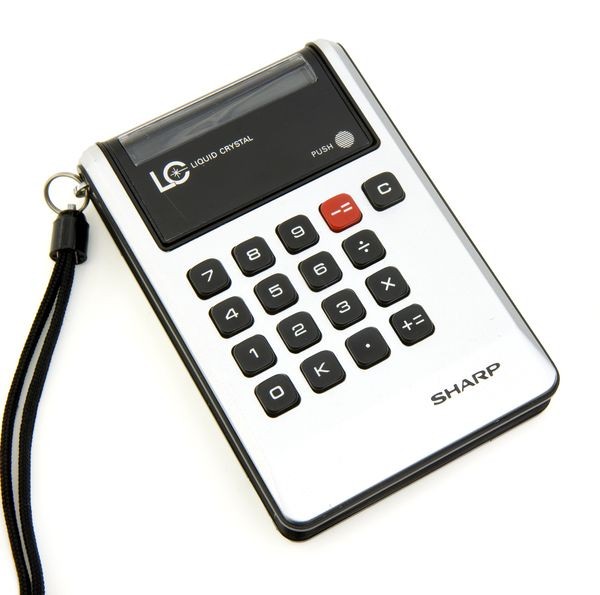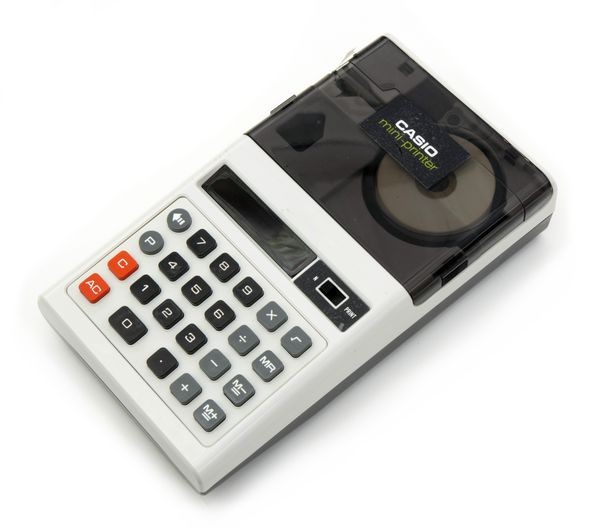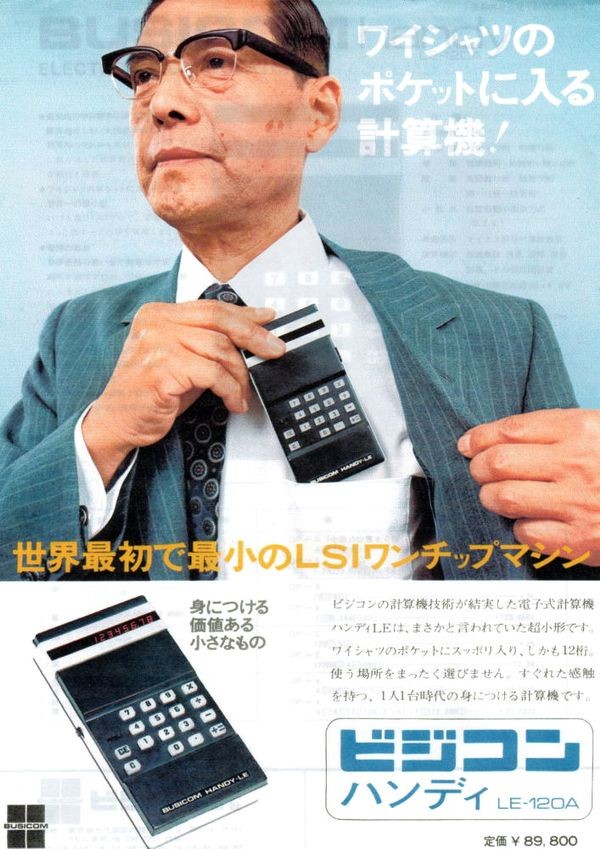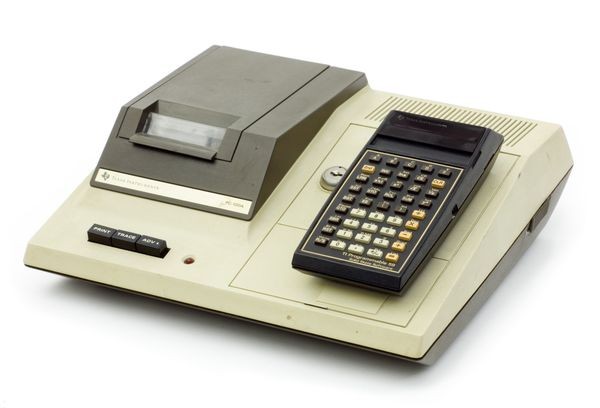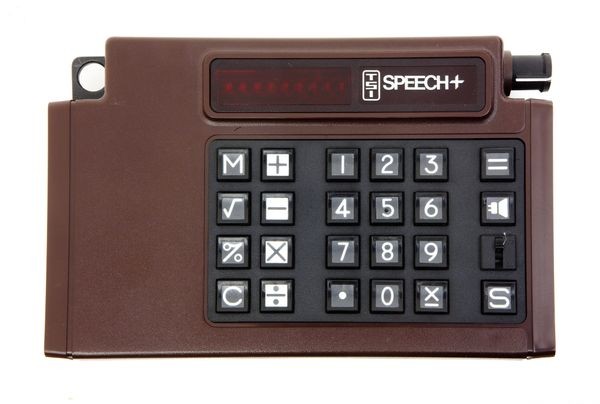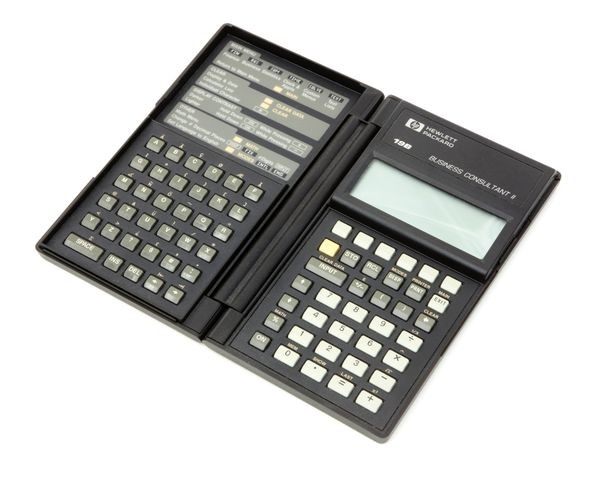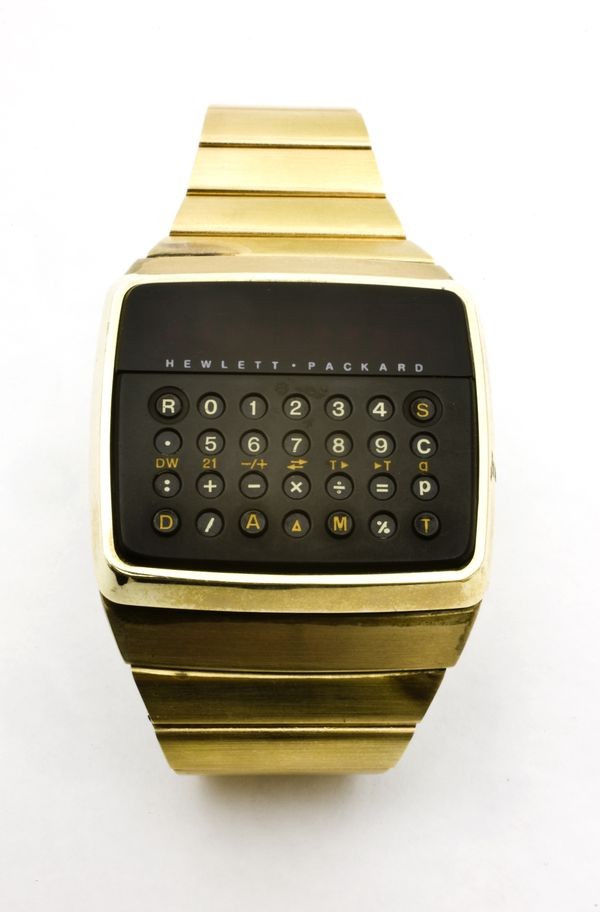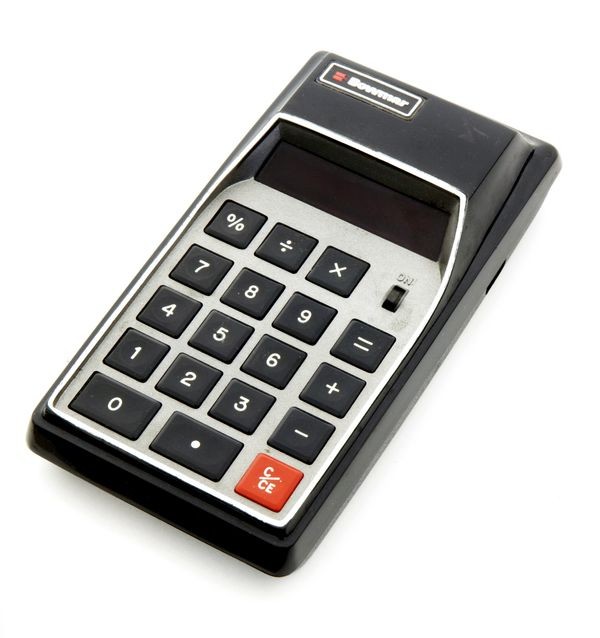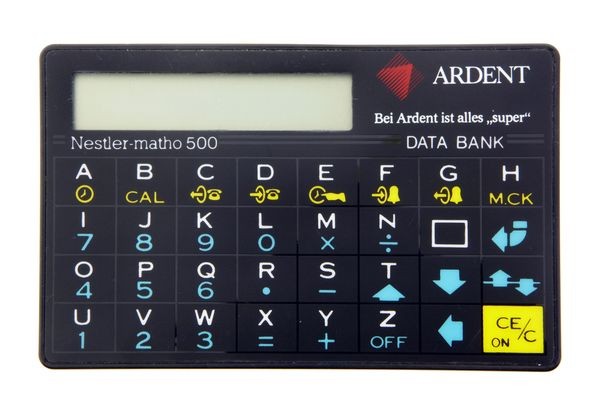From Desktops to Handhelds
Tandy Pocket Computer PC-8
This Sharp-designed “computer” improved on programmable calculators by having a full keyboard and the BASIC programming language.
From Desktops to Handhelds
Integrated circuits allowed electronic calculators to shrink. At Texas Instruments, integrated circuit pioneer Jack Kilby designed the first hand-held, four-function calculator in 1967.
Size wasn’t the only thing shrinking. The first mass market handheld, the Bowmar Brain, cost $245 in 1971. Within a decade, similar calculators sold for $10!
Jack Kilby with the first palm-sized calculator
Kilby’s calculator used a tiny paper-tape printer as a display. It showed the potential of integrated circuits in consumer goods.
View Artifact DetailTI-59 Programmable calculator
This could hold 960-step programs written in a primitive language. It used both magnetic cards and removable memory modules.
View Artifact DetailCasio Pocket-Mini P-811 calculator
Inexpensive calculators like this drove prices below $10 in the mid-1970s.
View Artifact DetailHP-97 printing programmable calculator
This calculator was supported by a large library of programs for math, engineering, navigation, surveying and games.
View Artifact DetailSharp EL-805 calculator
This was the first pocket calculator with an easy-to-read liquid-crystal display instead of red LEDs.
View Artifact DetailCanon LS-701II FlashCard calculator
A solar powered, credit card size calculator 1/8” (3 mm) thick.
View Artifact DetailCasio Mini-Printer calculator
This was based on Texas Instrument’s 1967 prototype.
View Artifact DetailBusicom LE-120A (“HANDY-LE”) advertisement
Busicom tailored this advertisement for status and value conscious businessmen. Another Busicom ad used a popular Japanese comedian to make the calculator seem approachable and easy to use.
View Artifact DetailTI PC-100A Printer and Security Cradle
The TI-59 calculator could hold 960-step programs written in a primitive language. It used both magnetic cards and removable memory modules.
View Artifact DetailTSI SPEECH+
This speaking calculator, designed for the blind, had a 24-word vocabulary. It came with the instruction manual on an audio cassette tape.
View Artifact DetailRockwell 8R calculator
The 8R included a percentage key, which soon became standard for four-function calculators.
View Artifact DetailHP-19B Business Consultant
This business calculator did mortgage and other financial calculations. It was not programmable, but it had a versatile “solve” function.
View Artifact DetailHP-01 digital wristwatch calculator
Having 6 integrated circuits with 38,000 transistors, this was a milestone of miniaturization. These are now prized by collectors.
View Artifact DetailBowmar MX55 Personal Calculator ("Bowmar Brain")
The “Brain” used red LED displays and a calculator chip from Western Digital. Licensed versions were built in Communist Hungary. Bowmar, perhaps the largest calculator manufacturer in 1973, was bankrupt by 1975.
View Artifact DetailNestler-matho 500 Data Bank
Nestler was a German slide rule manufacturer that survived – by making promotional trinkets like this calculator give-away for Ardent Computers.
View Artifact Detail